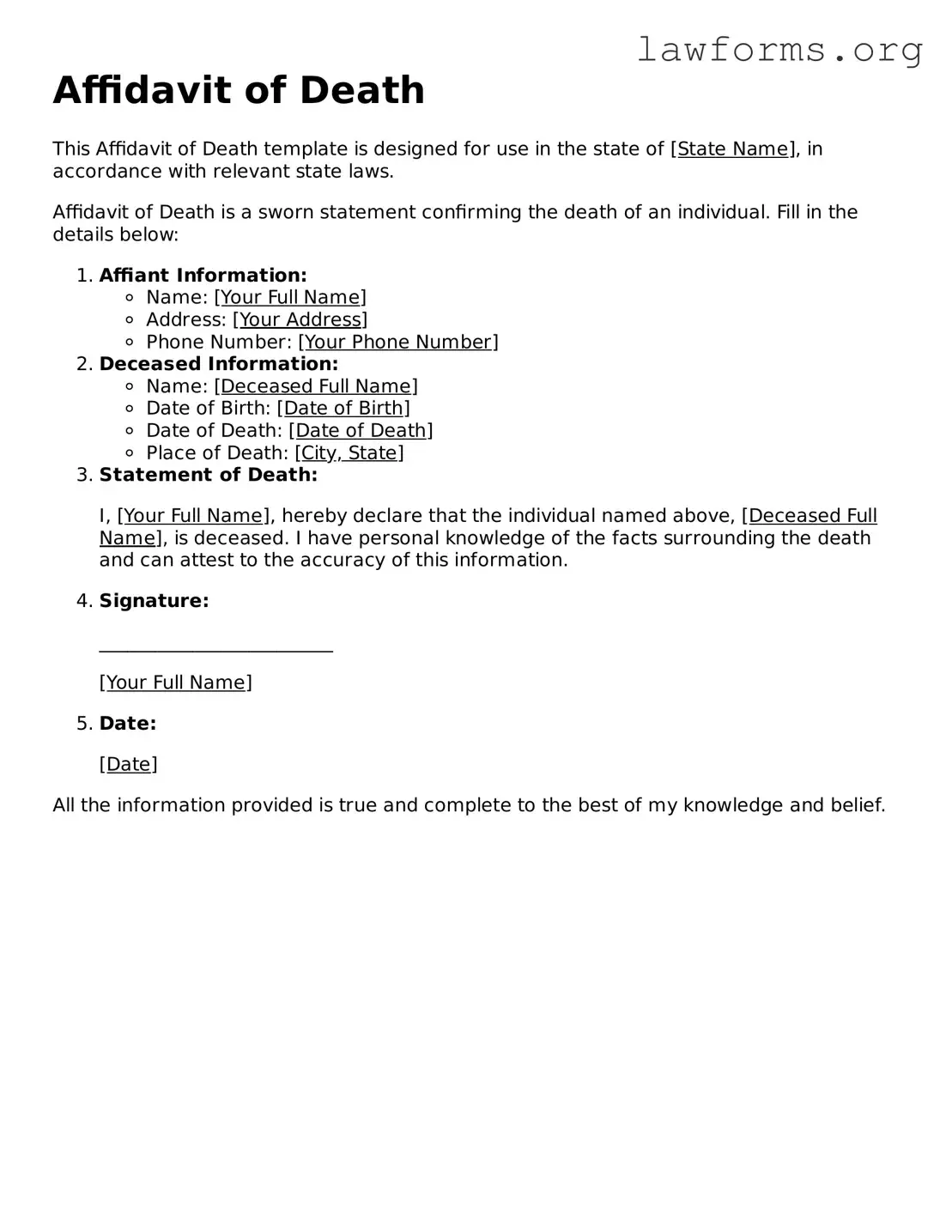Valid Affidavit of Death Form
The Affidavit of Death form is a legal document used to officially declare an individual's death. This form serves as a vital tool for settling estates, accessing benefits, and transferring assets. Understanding how to complete this form accurately is essential for those navigating the complexities of loss.
Ready to get started? Fill out the form by clicking the button below.
Customize Document Online
